
Course Introduction:To implement the proxy design pattern in Java, you first need to define a common interface, then implement the real topic class, then create a proxy class to control access to real objects, and finally use the proxy in the main program. 1. Define the public interface Image to ensure that the proxy and real objects are interchangeable; 2. Implement the RealImage class to be responsible for the loading and display of actual images; 3. Create the ImageProxy class to implement lazy loading in its display method; 4. Use ImageProxy in the Main class to delay loading image resources and improve efficiency. This mode supports multiple uses such as security control, logging, or remote calls.
2025-07-13 comment 0 971
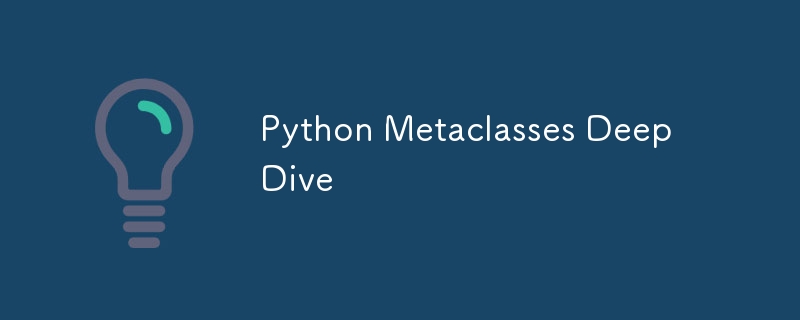
Course Introduction:Metaclass is a "template" of a class, used to control how classes are created, suitable for scenarios where framework design or large number of custom class behaviors are performed. It customizes the generation logic of the class by inheriting the type and rewriting the new or init methods. Common uses include automatic registration of subclasses, unified interface constraints, dynamic modification of class attributes, realizing singleton mode and ORM framework design, etc. When using it, you need to pay attention to avoid abuse, high debugging complexity, unintuitive reading order, and compatibility issues. Simple needs can be replaced by decorators.
2025-07-18 comment 0 642

Course Introduction:There are three main ways to implement thread-safe singleton mode: First, use double check lock and volatile keywords, enter the synchronization block after the first check that the instance is empty, and confirm again whether it is empty, ensuring that only one instance is created; second, use static inner class (BillPugh implementation) to ensure thread safety during class loading through JVM, delay loading and no explicit synchronization is required; third, use enumeration to implement singleton, which is naturally thread-safe and can prevent reflection and serialization attacks, but may not be suitable for complex initialization or inheritance. In addition, the simple lazy style affects performance because each call needs to be synchronized, and is not recommended to use in a multi-threaded environment. Choose different implementation methods according to your needs to take into account security, performance and simplicity
2025-07-13 comment 0 502
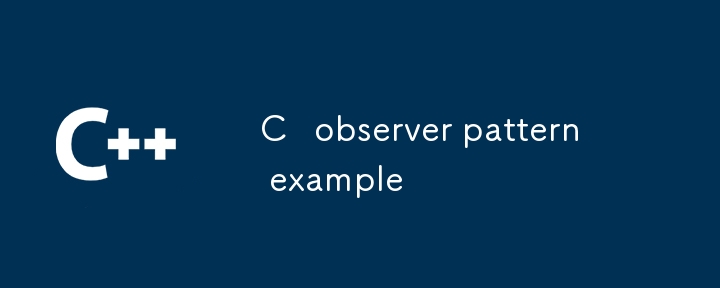
Course Introduction:Implementing the observer mode in C can be accomplished by defining the observer interface, the observed class and the specific observer class. 1. Define the Observer abstract class and declare the update pure virtual function; 2. Implement the Subject class to maintain the weak_ptr observer list, and provide registration, removal and notification methods; 3. Create a specific observer such as DisplayDevice to implement update logic; 4. Create a shared object in the main function and test the temperature update and observer removal, and finally output the corresponding information. The design uses intelligent pointers to avoid memory leakage and realize automatic cleaning, supports loose coupling and scalability, and is suitable for situation monitoring and other scenarios.
2025-08-24 comment 0 681
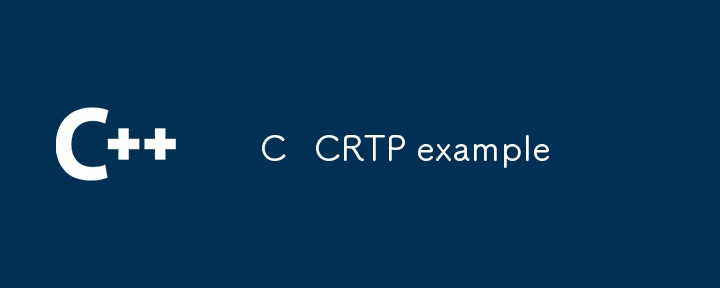
Course Introduction:CRTP realizes static polymorphism for derived class types through base class template parameters. 1. The base class uses template parameters Derived to obtain derived class types, and calls derived class methods to achieve static distribution through static_cast; 2. All classes that inherit Cloneable automatically obtain type-safe clone() functions; 3. Advantages include virtual function overhead, high parsing performance during compilation, code reuse and type safety; 4. Notes include derived classes that must correctly inherit Base, and implement the desired methods of the base class, and cannot directly manage different derived class objects through base class pointers. This mode is widely used in high-performance libraries such as Eigen and Boost.
2025-07-30 comment 0 346

Course Elementary 13927
Course Introduction:Scala Tutorial Scala is a multi-paradigm programming language, designed to integrate various features of object-oriented programming and functional programming.
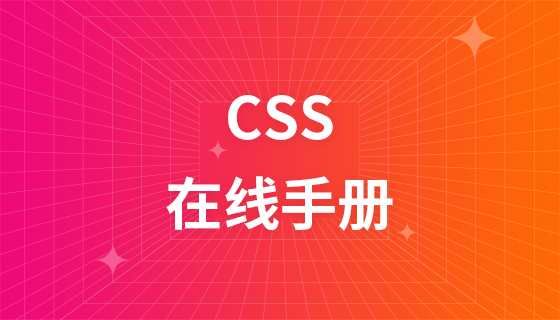
Course Elementary 82482
Course Introduction:"CSS Online Manual" is the official CSS online reference manual. This CSS online development manual contains various CSS properties, definitions, usage methods, example operations, etc. It is an indispensable online query manual for WEB programming learners and developers! CSS: Cascading Style Sheets (English full name: Cascading Style Sheets) is an application used to express HTML (Standard Universal Markup Language).

Course Elementary 13265
Course Introduction:SVG is a markup language for vector graphics in HTML5. It maintains powerful drawing capabilities and at the same time has a very high-end interface to operate graphics by directly operating Dom nodes. This "SVG Tutorial" is intended to allow students to master the SVG language and some of its corresponding APIs, combined with the knowledge of 2D drawing, so that students can render and control complex graphics on the page.
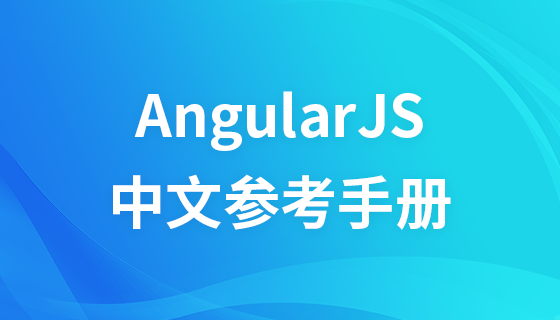
Course Elementary 24731
Course Introduction:In the "AngularJS Chinese Reference Manual", AngularJS extends HTML with new attributes and expressions. AngularJS can build a single page application (SPAs: Single Page Applications). AngularJS is very easy to learn.

Course Elementary 27566
Course Introduction:Go is a new language, a concurrent, garbage-collected, fast-compiled language. It can compile a large Go program in a few seconds on a single computer. Go provides a model for software construction that makes dependency analysis easier and avoids most C-style include files and library headers. Go is a statically typed language, and its type system has no hierarchy. Therefore users do not need to spend time defining relationships between types, which feels more lightweight than typical object-oriented languages. Go is a completely garbage-collected language and provides basic support for concurrent execution and communication. By its design, Go is intended to provide a method for constructing system software on multi-core machines.
2022-10-25 09:17:59 0 5 1090
PDO's automatic submission function is enabled on MySQL with autocommit turned off
2023-08-08 15:23:46 0 1 640
Laravel Modal does not return data
2024-03-29 10:31:31 0 1 666
Can I use the automatic generation module of thinkphp5 in Windows 7 system? How to configure and use
2017-10-10 17:04:14 0 2 1458